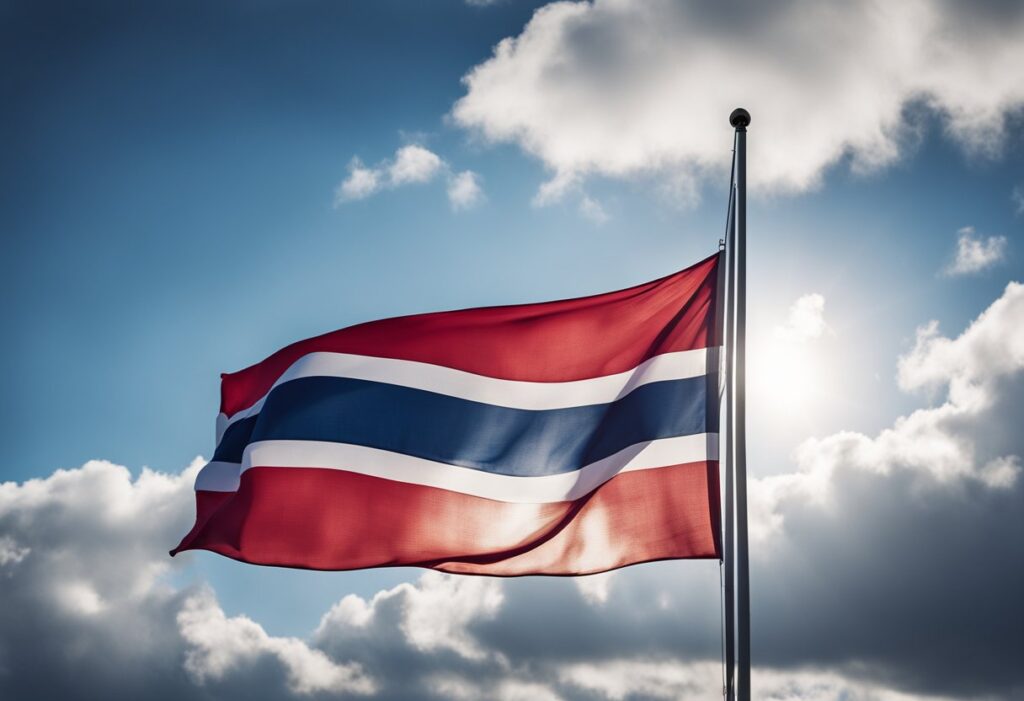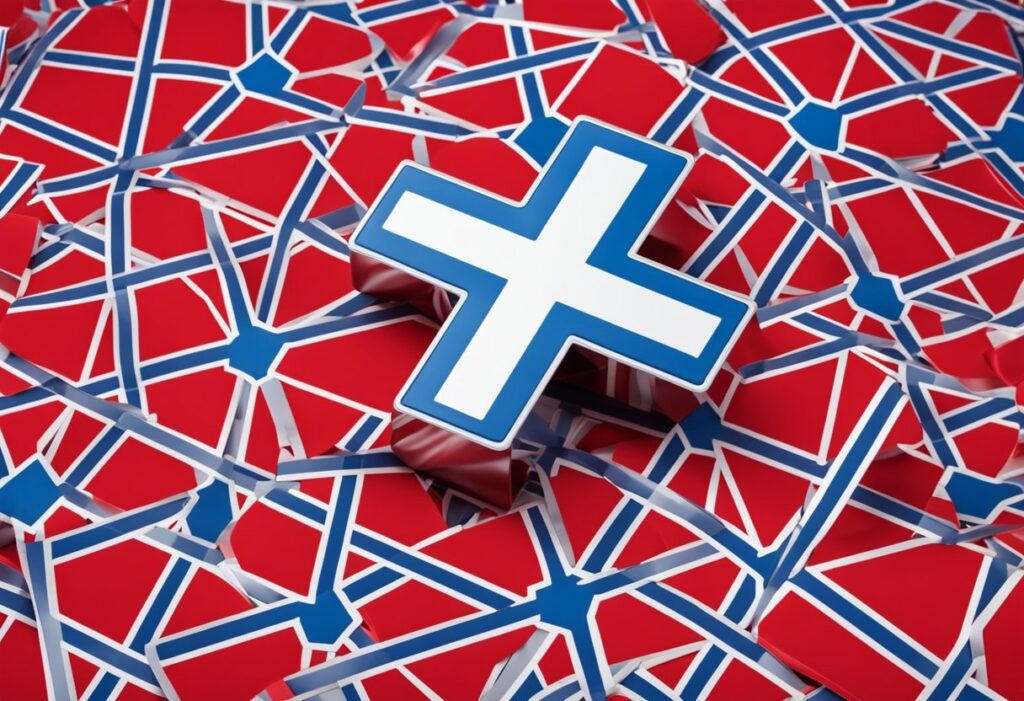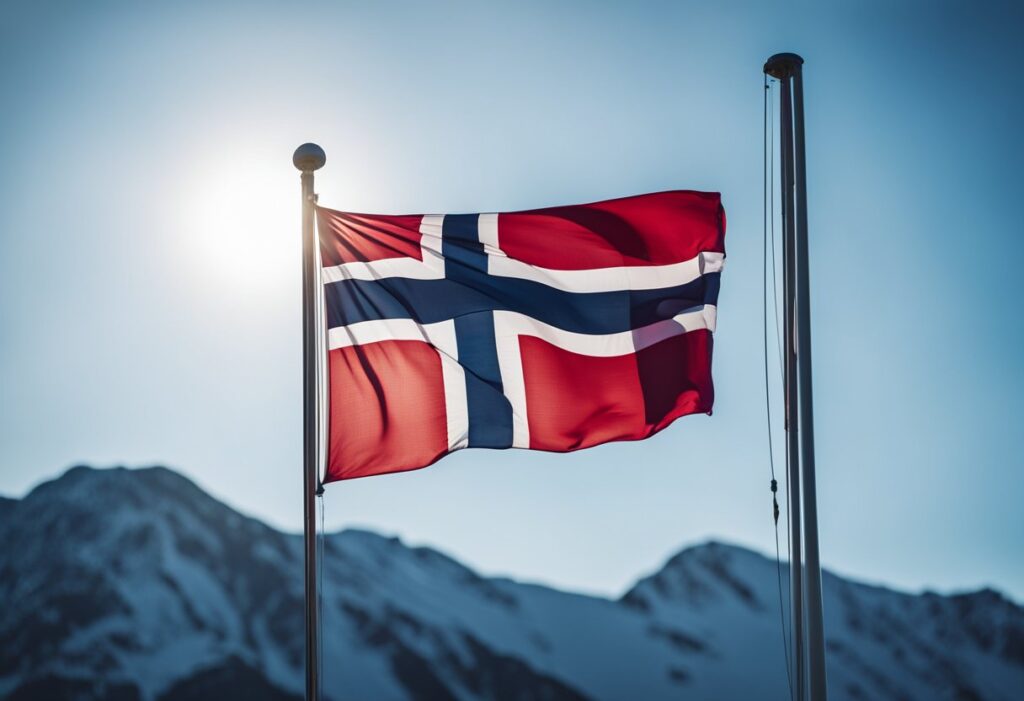The Norway flag, also known as the “Norway flag,” is a red, white, and blue flag with a distinct cross design. It is one of the oldest national flags in the world, having been in use since 1821. The flag is a symbol of Norway’s rich history and culture, and it holds a special place in the hearts of Norwegians everywhere.
Norway Flag History

The flag’s design is simple yet distinctive, with a red background, a white cross, and a blue border. The cross is offset towards the hoist side, which is a unique feature of the Norway flag. The colors themselves have symbolic meanings, with red representing bravery, white representing purity, and blue representing loyalty and justice. The flag is often used during national holidays and events, and it is a common sight throughout Norway.
Design and Symbolism

Colors and Proportions
The Norw flag is a rectangular-shaped flag with a 6:10 proportion. It features a red background with a blue cross outlined in white, which extends to the edges of the flag. The blue cross is offset towards the hoist side of the flag, which means the vertical arm of the cross is closer to the left edge of the flag than to the right edge.
The red color of the flag symbolizes Norway’s independence and bravery, while the blue cross represents Norway’s connection to the sea and Christianity. The white border around the cross serves to make the cross stand out more prominently and to emphasize its significance.
Cross Symbolism
The cross on the Norwegian flag is known as the Nordic cross. It is a symbol that is commonly used by the Nordic countries, including Norway, Sweden, Finland, Denmark, and Iceland. The cross is said to represent the countries’ shared cultural and historical heritage, as well as their shared values of democracy, freedom, and human rights.
In Norway, the cross also has a religious significance, as it represents the country’s Christian heritage. The cross is said to symbolize the crucifixion of Jesus Christ and the sacrifice that he made for humanity.
Historical Development
The Norwegian flag has a long and complex history. The earliest known version of the flag dates back to the 13th century when it was used by Norwegian soldiers during the reign of King Magnus VI. At that time, the flag consisted of a red cloth with a golden lion on it.
Over time, the design of the flag evolved, and the lion was eventually replaced with a cross. The current design of the flag was adopted on July 17, 1821, and it has remained unchanged ever since.
Today, the Norwegian flag symbolizes the country’s rich cultural heritage and proud history. It is flown on a variety of occasions, including national holidays, sporting events, and other important celebrations.
Usage and Protocol

National Flag Usage
The Norwegian flag is widely used throughout the country and is considered a symbol of national pride and unity. It is flown on public buildings, private homes, and boats. The flag is also used during national holidays and events such as Constitution Day and the Winter Olympics.
The Norwegian flag is designed to be flown in a particular way. The blue cross should always be positioned towards the hoist side of the flagpole, and the red should be on the opposite side. When flown at half-mast, the flag should be raised to the top of the pole and then lowered to half-mast.
Flag Days and Display Rules
There are specific rules for displaying the Norwegian flag on certain days. The flag should be flown from sunrise to sunset, and it should not be flown in bad weather conditions. It is also considered disrespectful to fly a damaged or dirty flag.
The Norwegian government has designated certain days as flag days, where the flag should be flown. These include Constitution Day, May 17th, and the King’s birthday, July 4th. On these days, the flag should be flown from all public buildings and private homes.
In addition to these rules, there are guidelines for displaying the Norwegian flag alongside other flags. The Norwegian flag should always be flown in a position of honor, which means it should be positioned higher than other flags. If multiple flags are flown together, the Norwegian flag should be placed in the center.
Overall, the Norwegian flag is an important symbol of the country’s history and culture. It can be displayed with pride and respect by following the proper usage and protocol guidelines.

1 thought on “Norway Flag: History, Meaning, and Symbolism”
Pingback: Demisexual Flag: Meaning and Symbolism